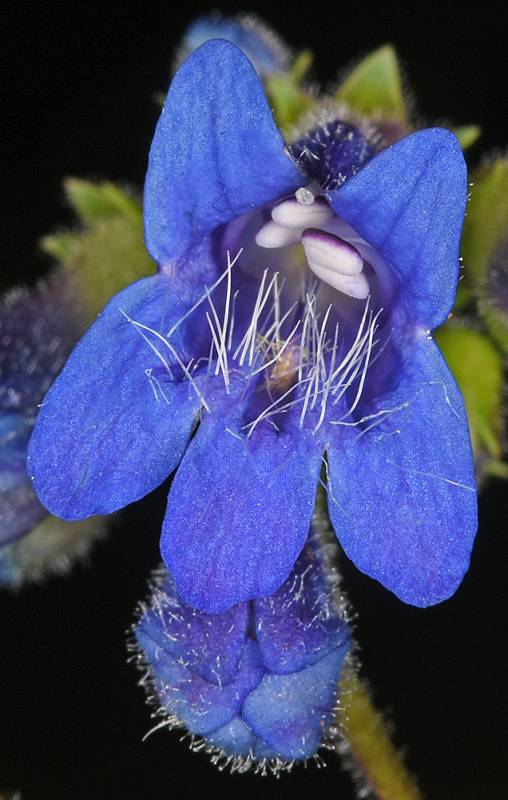Penstemon cardwellii
Penstemon wilcoxii
Cardwell's beardtongue
Wilcox's beardtongue
Leaves opposite, glabrous, the largest on short, sterile shoots, serrulate or nearly entire, short-petiolate, the blades elliptic, 1.5-3.5 cm. long and 6-14 mm. wide;
leaves of the flowering shoots less crowded, smaller, sessile and entire.
Leaves opposite, strongly serrate with slender teeth, the basal leaves well-developed, elliptic to deltoid-ovate, the blade up to 9 cm. long and 5 cm. wide, about equal to the petiole;
cauline leaves often larger than the basal, sessile, 4-10 cm. long and 1.5-4 cm. wide.
Inflorescence racemose, few-flowered and crowded, glandular, the simple pedicels opposite and axillary;
calyx 5-12 mm. long, the 5 segments thin and lanceolate;
corolla bright purple to deep blue-violet, 30-38 mm. long, about 1 cm. wide at the mouth, keeled on the back, glabrous outside and with long, white hairs near the base of the lower lip within;
anthers long-wooly, pollen sacs opposite;
staminode slender, shorter than the 4 fertile filaments, long-bearded toward the tip
Inflorescence of several large, loose verticillasters;
calyx 2.5-5 mm. long, the 5 segments broadly lanceolate, narrowly scarious-margined;
corolla blue, the paler throat with guide lines, 15-23 mm. long, the tube 4-8 mm. wide at the mouth, glandular-hairy on the outside, strongly bilabiate, the lower lip much longer than the upper, the raised portion bearded;
pollen sacs 0.7-1.0 mm. long, wholly dehiscent, becoming opposite, glabrous;
staminode with a recurved, bearded tip.
Capsule
Capsule 4-6 mm. long.



